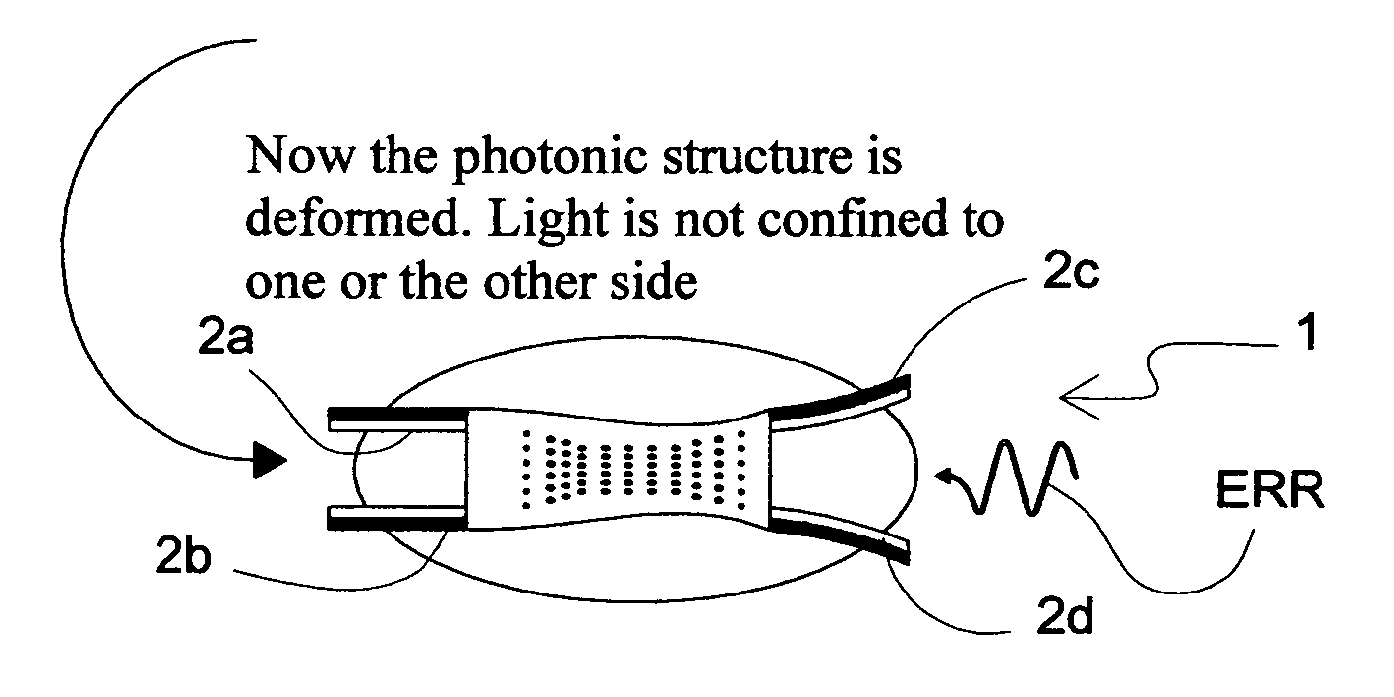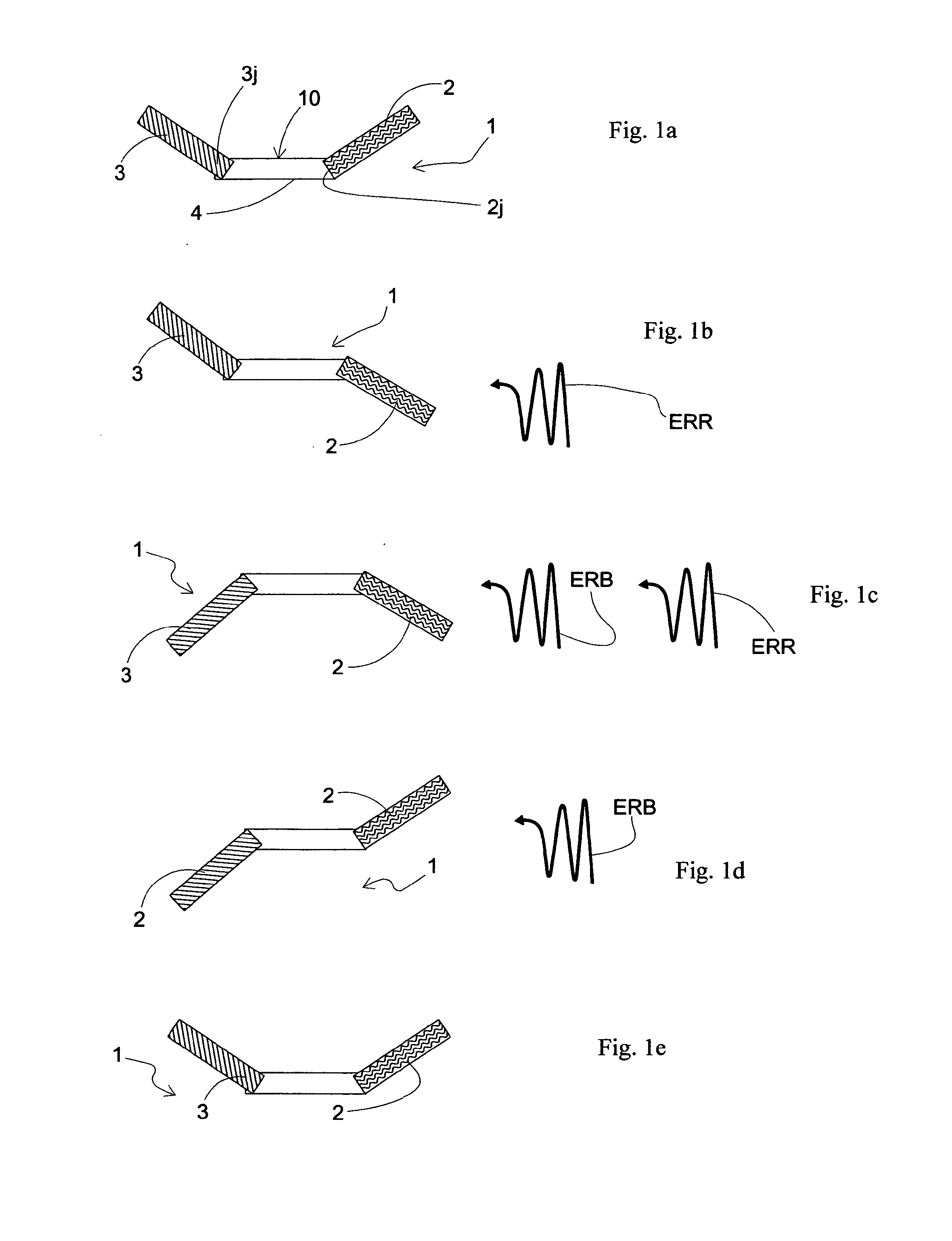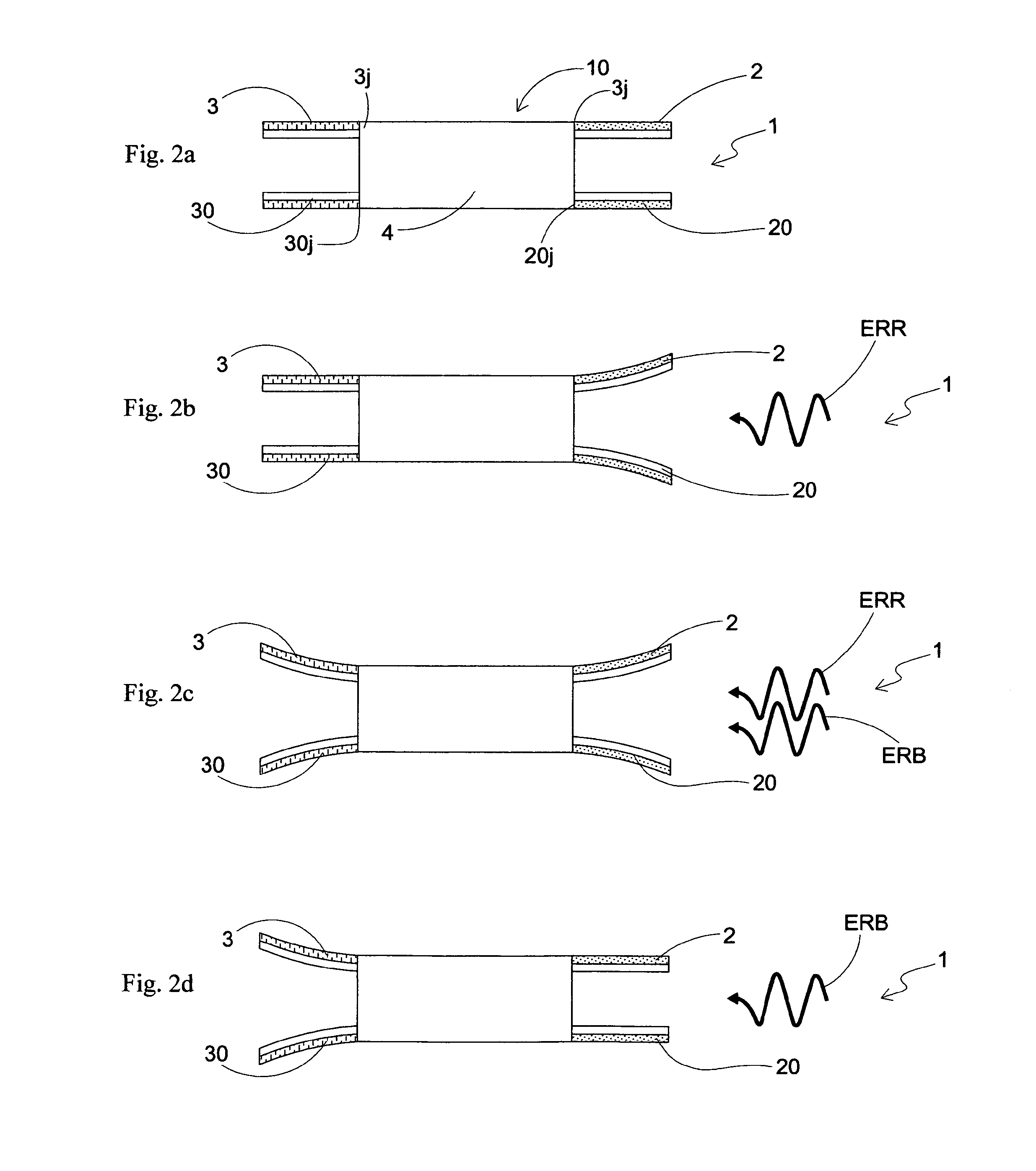Light driven liquid crystal elastomer actuator
a technology of liquid crystal elastomer and actuator, which is applied in the direction of microstructural technology, microstructural devices, piezoelectric/electrostrictive devices, etc., can solve the problems of not being able to achieve a net motion on micrometer length scales, and the creation of artificial structures that can perform micro robotic tasks in liquids has proved not to be easy
- Summary
- Abstract
- Description
- Claims
- Application Information
AI Technical Summary
Benefits of technology
Problems solved by technology
Method used
Image
Examples
preparation 1
[0173]General methods: Commercial reagents were used as received. All reactions were magnetically stirred and monitored by TLC on 0.25 mm silica gel plates (Merck F254) and column chromatography was carried out on Silica Gel 60 (32-63 μm). Yields refer to spectroscopically and analytically pure compounds. NMR spectra were recorded on a Varian Mercury-400, on a Varian Gemini 300 or on a Varian Gemini-200. Melting Point were recorded on a Electrothermal.
2-((E)-{4-[ethyl(6-hydroxyhexyl)amino]phenyl}diazenyl)-5-nitrobenzonitrile
[0174]
[0175]2-Amino-5-nitrobenzonitrile (300 mg, 2.20 mmol) was dissolved in a solution of H2O (3.7 ml), HCl (0.5 ml) and CH3COOH (9.2 ml) and stirred at 60 / 70° C. overnight until complete dissolution. Then the solution was cooled to 0° C. and a cooled (0° C.) solution of NaNO2 (127 mg, 1.84 mmol) in H2O (2 ml) was added dropwise. Afterwards a solution of N-ethyl-N-(6-hydroxyhexyl)aniline (Jen et al. U.S. Pat. No. 7,601,849B1; 487 mg, 2.20 mmol) in MeOH (3.5 ml)...
preparation 2
6-[{4-[(E)-(2-cyano-4-nitrophenyl)diazenyl]phenyl}(ethyl)amino]hexyl acrylate (D6)
[0176]
[0177]To a solution of 2-((E)-{4-[ethyl(6-hydroxyhexyl)amino]phenyl}diazenyl)-5-nitrobenzonitrile (435 mg, 1.10 mmol) in dry DCM (38 ml), TEA (0.46 ml, 3.30 mmol) and acryloyl chloride (0.13 ml, 1.65 mmol) were added, then the mixture was stirred at rt for 2 h until a TLC (petroleum ether:ethyl acetate=2:1) showed the disappearance of the starting material (Rf=0.15) and the formation of a new product (Rf=0.73). The solution was washed with water (3×20 ml) and the combined organic layers dried over Na2SO4, filtered and evaporated under reduced pressure afforded a crude that was purified by FCC (petroleum ether:ethyl acetate=4:1) to give the desired product in 85% yield (420 mg, 0.94 mmol) as a purple solid. Mp=94-96° C.; 1H-NMR (300 MHz, CDCl3) δ 8.54 (d, J=2.47 Hz, 1H, Ar), 8.36 (dd, J=9.06, 2.47 Hz, 1H, Ar), 7.93 (dd, J=9.06, 2.47 Hz, 3H, Ar), 6.69 (d, J=9.34 Hz, 2H, Ar), 6.40 (dd, J=17.31, 1.37...
PUM
| Property | Measurement | Unit |
|---|---|---|
| Reynolds number | aaaaa | aaaaa |
| Reynolds numbers | aaaaa | aaaaa |
| Reynolds number | aaaaa | aaaaa |
Abstract
Description
Claims
Application Information
 Login to View More
Login to View More - R&D
- Intellectual Property
- Life Sciences
- Materials
- Tech Scout
- Unparalleled Data Quality
- Higher Quality Content
- 60% Fewer Hallucinations
Browse by: Latest US Patents, China's latest patents, Technical Efficacy Thesaurus, Application Domain, Technology Topic, Popular Technical Reports.
© 2025 PatSnap. All rights reserved.Legal|Privacy policy|Modern Slavery Act Transparency Statement|Sitemap|About US| Contact US: help@patsnap.com



